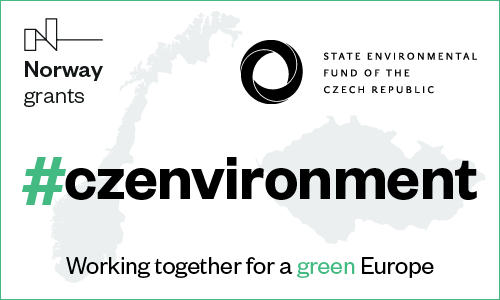
The project is funded by EEA Norway Grants 2014–2021, via Programme “Environment, Ecosystems and Climate Change” of the State Environmental Fund of the Czech Republic and call “Rago – Pilot Projects and Innovative Solutions for Improving the State of the Ecosystems” (NF Call-1 – 3.1.1.1).
Floating Islands – Supporting Biodiversity and Water Quality
The main goal of the project is to support and restore nesting sites of the common tern (Sterna hirundo). The common tern is a particularly protected and highly endangered species (according to the Red List of Vertebrates of the Czech Republic) and at the same time a priority species according to the European directive on birds. The project is managed by the South Moravian branch of the Czech Ornithological Society.
The common tern nests on islands and river gravel alluvia devoid of vegetation. These habitats are created by the natural dynamics of rivers, meandering, water level fluctuations and waves. However, in the agricultural landscape of southern Moravia, these nesting habitats have almost disappeared due to the disruption or restriction of the natural regime of water courses and the modification of the shores of the islands.
As the main project activity, we are installing 8 floating islands on South Moravian ponds to create new nesting sites for common terns. The islands will be maintenance-free, stable and frost-resistant. Thanks to the overlap above the water surface, semi-aquatic predators (such as rat or American mink) cannot get on the island’s surface from the water. During the nesting season, we will regularly record the events on the island with a camera trap and with a drone to get an overview of the nesting success without disturbing the birds.
As an innovation, the nesting islands will be supplemented by vegetated floating islands.
Floating vegetated islands will be anchored near the nesting islands. They will provide shelter for terns’ chicks while they learn to fly. The nesting islands do not have gradually descending shores. In their first clumsy attempts to fly, the chicks often fall into the water, from where they cannot easily get back to the nest. Then they swim around in the water and may die of exhaustion or be caught. Vegetated islands will provide the young terns with a temporary shelter, where they can rest and be fed by their parents before the next attempt to take off. At the same time, thanks to the photosynthesis of rooted plants, the vegetated islands will help reduce the nutrient content in nutrient-rich pond waters and create a habitat for other (not only bird) species.
The vegetated islands compose of steel nets, into which a mat made of coconut fibers is attached. Aquatic plants are planted in the mat, e.g. sedges, reeds, water irises. The construction is light and at the same time sufficiently strong and durable to stay afloat. It is anchored to the bottom of the pond. One of the main advantages this construction is also its variability. Vegetation islands can be assembled from individual parts (2 x 1 m) into various shapes.
The construction and technology of the artificial floating vegetated islands was developed by the company Water Management Development and Construction (Vodohospodáský rozvoj a vystba a.s.) within the project TH02030633. Design solutions are protected by utility model No. 34438.


















